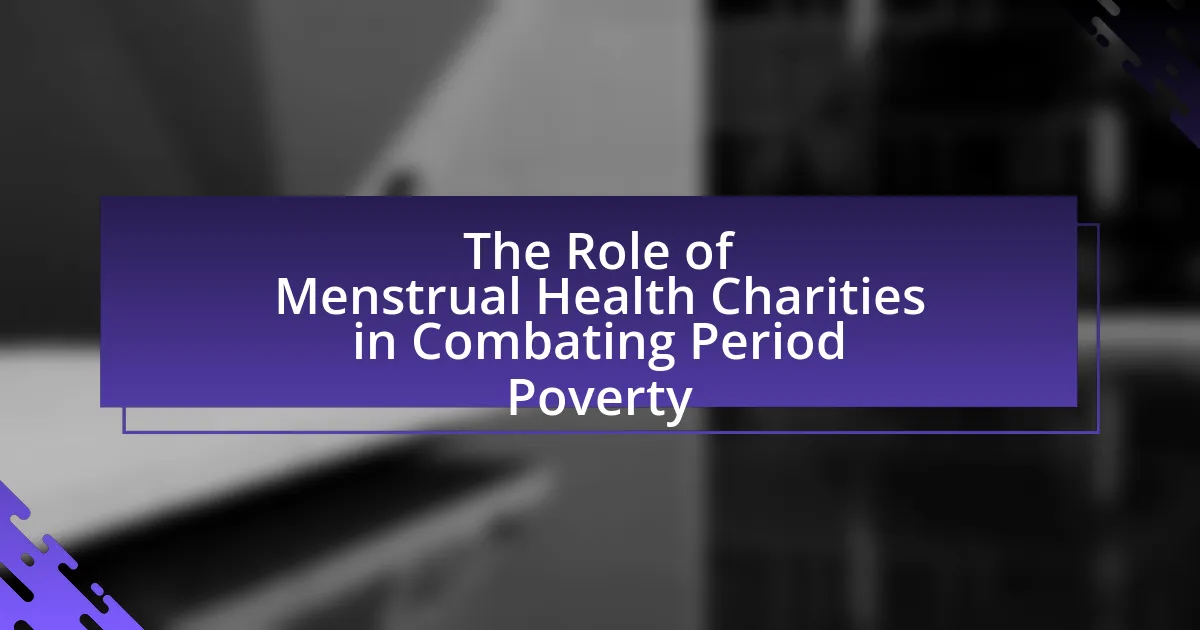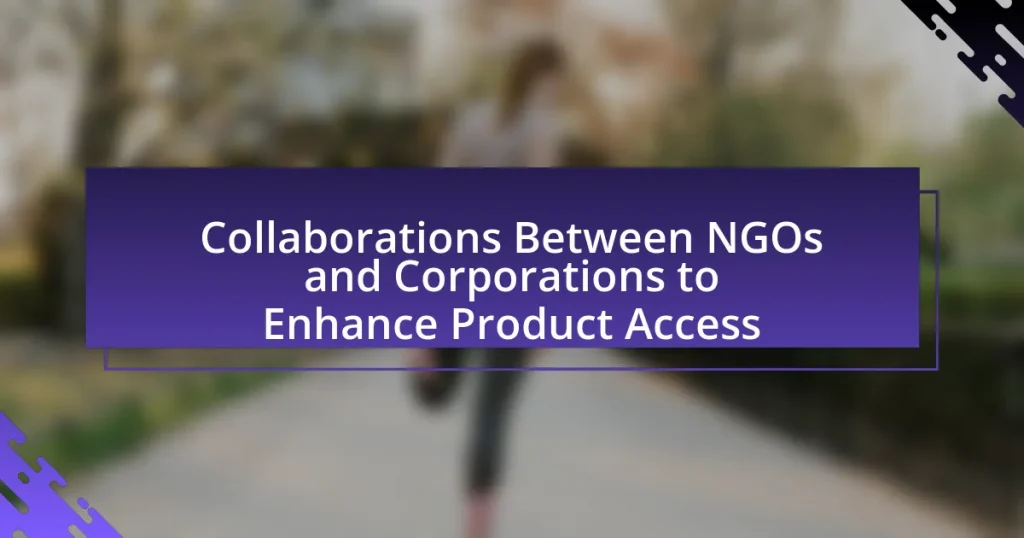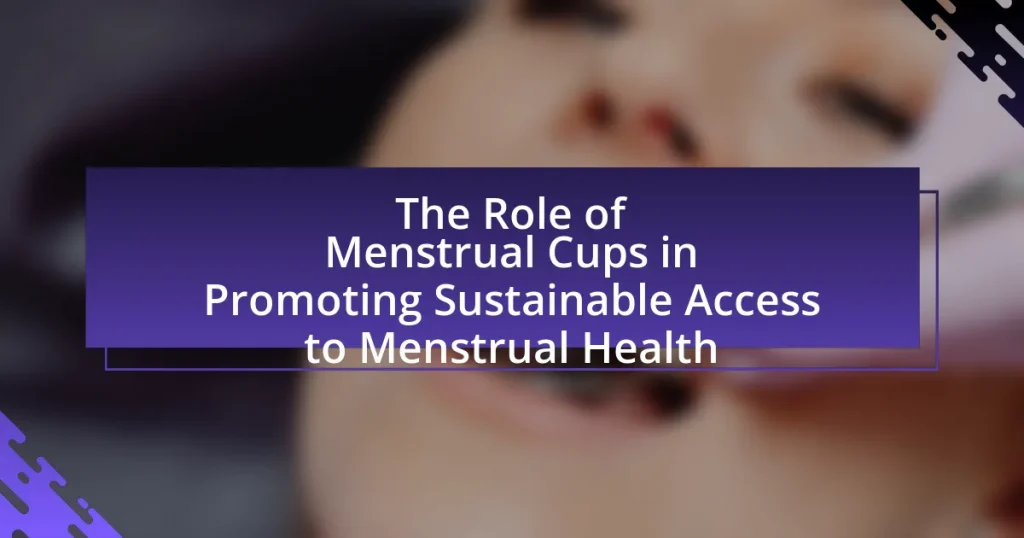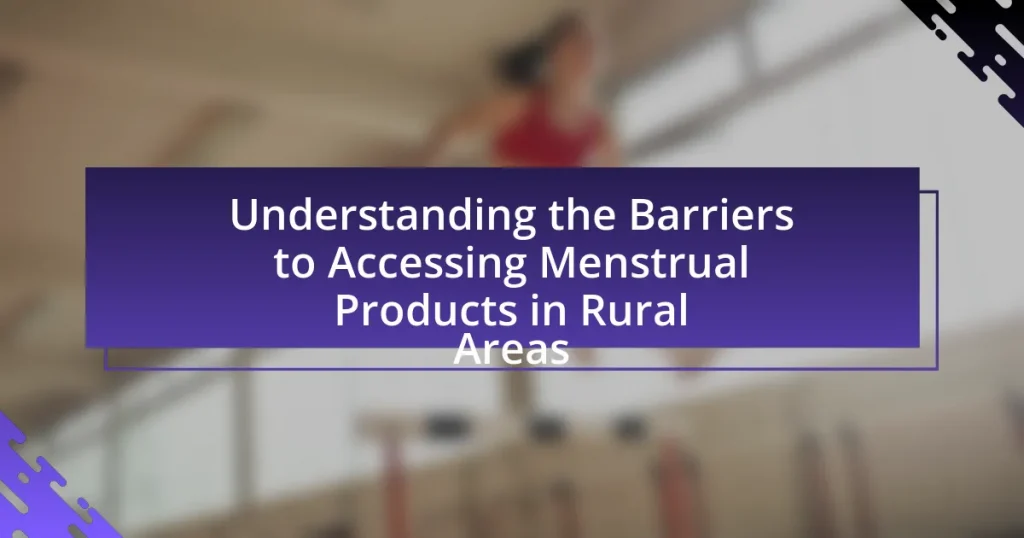Menstrual health charities play a vital role in addressing period poverty by providing access to menstrual products, education, and advocacy. These organizations, such as Period and Days for Girls, distribute sanitary products and implement educational programs to ensure individuals can manage their menstrual health effectively. They also advocate for policy changes to promote menstrual equity and raise awareness about the stigma surrounding menstruation. The article explores the specific services offered by these charities, the social and economic impacts of period poverty, and the strategies employed to combat this issue, highlighting the importance of community involvement and funding in their efforts.

What is the Role of Menstrual Health Charities in Combating Period Poverty?
Menstrual health charities play a crucial role in combating period poverty by providing access to menstrual products, education, and advocacy. These organizations distribute sanitary products to individuals in need, ensuring that lack of access does not hinder their health or education. For instance, charities like Period and Days for Girls have distributed millions of menstrual products globally, directly addressing the needs of those affected by period poverty. Additionally, these charities raise awareness about menstrual health issues, advocating for policy changes that promote menstrual equity and challenge the stigma surrounding menstruation. Their efforts contribute to breaking the cycle of poverty by enabling individuals to participate fully in school and work without the barriers posed by inadequate menstrual hygiene resources.
How do menstrual health charities address the issue of period poverty?
Menstrual health charities address the issue of period poverty by providing access to menstrual products, education, and advocacy. These organizations distribute free or subsidized sanitary products to individuals in need, ensuring that lack of financial resources does not hinder menstrual hygiene. For example, charities like Period and Days for Girls have implemented programs that deliver menstrual kits and hygiene education to underserved communities. Additionally, they advocate for policy changes to eliminate taxes on menstrual products and promote awareness about the importance of menstrual health, thereby addressing the stigma associated with menstruation. This multifaceted approach not only alleviates immediate needs but also fosters long-term societal change regarding menstrual health.
What specific services do these charities provide to those in need?
Menstrual health charities provide essential services such as distributing menstrual hygiene products, offering educational programs on menstrual health, and advocating for policy changes to improve access to menstrual care. These services directly address period poverty by ensuring that individuals have the necessary resources and knowledge to manage their menstrual health effectively. For instance, organizations like Period.org have distributed over 1.5 million menstrual products to those in need, highlighting the tangible impact of these charities in combating period poverty.
How do menstrual health charities raise awareness about period poverty?
Menstrual health charities raise awareness about period poverty through educational campaigns, community outreach, and partnerships with schools and organizations. These charities often conduct workshops and seminars to inform the public about the challenges faced by individuals experiencing period poverty, highlighting statistics such as that 1 in 5 girls in the UK have missed school due to their period, according to a 2017 study by Plan International. Additionally, they utilize social media platforms to share personal stories and facts, thereby increasing visibility and fostering discussions around menstrual health. Collaborations with influencers and public figures further amplify their message, reaching wider audiences and encouraging advocacy for policy changes related to menstrual equity.
Why is period poverty a significant issue in today’s society?
Period poverty is a significant issue in today’s society because it restricts access to menstrual hygiene products, leading to health risks and social stigma for individuals who menstruate. According to a study by the World Bank, approximately 500 million people globally lack access to menstrual products, which can result in missed school days and decreased economic opportunities. This lack of access not only affects physical health, increasing the risk of infections, but also perpetuates gender inequality by limiting educational and professional advancement for those affected.
What are the social and economic impacts of period poverty?
Period poverty has significant social and economic impacts, primarily affecting individuals’ health, education, and financial stability. Socially, individuals experiencing period poverty often face stigma and isolation, leading to mental health issues and reduced participation in community activities. Economically, the lack of access to menstrual products can result in missed school or workdays, which translates to lost income and educational opportunities. For instance, a study by the Global Citizen reported that 1 in 10 girls in Africa misses school during their menstrual cycle, which can hinder their academic performance and future job prospects. Additionally, the economic burden of purchasing menstrual products can strain low-income households, diverting funds from essential needs.
How does period poverty affect different demographics?
Period poverty affects various demographics by limiting access to menstrual products, which can lead to significant health, educational, and economic consequences. For instance, low-income individuals, particularly women and girls, often miss school or work due to inadequate menstrual hygiene management, with studies indicating that 1 in 10 girls in Africa miss school during their periods. Additionally, marginalized communities, including those in rural areas or experiencing homelessness, face heightened challenges in obtaining necessary supplies, exacerbating health risks such as infections. Furthermore, cultural stigmas surrounding menstruation can lead to social isolation and mental health issues across different demographics, particularly among adolescents.
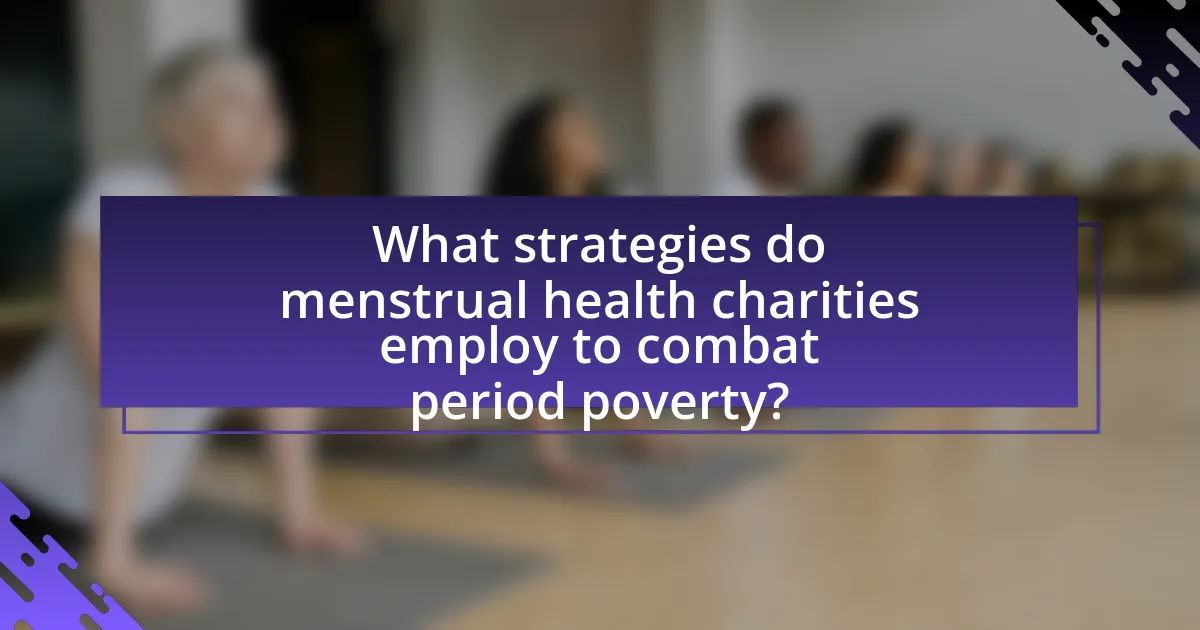
What strategies do menstrual health charities employ to combat period poverty?
Menstrual health charities employ several strategies to combat period poverty, including providing free menstrual products, advocating for policy changes, and raising awareness about menstrual health. These organizations distribute menstrual hygiene products to underserved communities, ensuring access for individuals who cannot afford them. For example, charities like Period and Days for Girls have implemented programs that deliver menstrual kits directly to those in need, addressing immediate product shortages. Additionally, these charities engage in advocacy efforts to influence legislation that promotes menstrual equity, such as the removal of taxes on menstrual products and the inclusion of menstrual health education in school curricula. Awareness campaigns further educate the public about the stigma surrounding menstruation and the importance of menstrual health, fostering a supportive environment for those affected by period poverty.
How do partnerships enhance the effectiveness of these charities?
Partnerships enhance the effectiveness of menstrual health charities by expanding their reach and resources, allowing for more comprehensive solutions to period poverty. Collaborations with local organizations, governments, and businesses provide charities with access to funding, distribution networks, and community insights, which are crucial for addressing the specific needs of affected populations. For instance, partnerships can facilitate the distribution of menstrual products and education programs, significantly increasing the number of individuals served. Research indicates that collaborative efforts can lead to a 30% increase in program effectiveness, as seen in initiatives where charities partnered with schools and health clinics to provide holistic menstrual health education and resources.
What role do local communities play in supporting menstrual health charities?
Local communities play a crucial role in supporting menstrual health charities by providing grassroots advocacy, fundraising, and awareness-raising efforts. These communities often mobilize to organize events, such as donation drives and educational workshops, which directly benefit menstrual health initiatives. For instance, community-led campaigns can significantly increase access to menstrual products for underserved populations, thereby addressing period poverty effectively. Research indicates that local involvement can enhance the sustainability of these charities, as community members are more likely to contribute resources and support when they understand the specific needs of their peers.
How do menstrual health charities utilize social media for outreach?
Menstrual health charities utilize social media for outreach by creating awareness campaigns, sharing educational content, and fostering community engagement. These organizations leverage platforms like Instagram, Twitter, and Facebook to disseminate information about menstrual health, combat stigma, and promote their initiatives. For instance, campaigns such as #PeriodPoverty have gained traction, highlighting the challenges faced by individuals who cannot afford menstrual products. Research indicates that social media can significantly increase engagement, with studies showing that 70% of young people are more likely to support causes they see on social media. This demonstrates the effectiveness of social media as a tool for menstrual health charities to reach wider audiences and mobilize support for their missions.
What funding sources support menstrual health charities?
Menstrual health charities are primarily supported by a combination of government grants, private donations, corporate sponsorships, and crowdfunding initiatives. Government grants often come from health departments or international organizations focused on public health, providing essential funding for programs aimed at improving menstrual health. Private donations from individuals and philanthropic foundations contribute significantly to these charities, enabling them to expand their outreach and services. Corporate sponsorships from companies committed to social responsibility also play a crucial role, often funding specific projects or awareness campaigns. Additionally, crowdfunding platforms allow grassroots support, enabling communities to raise funds directly for menstrual health initiatives. These diverse funding sources collectively enhance the capacity of menstrual health charities to combat period poverty effectively.
How do grants and donations impact the operations of these charities?
Grants and donations significantly enhance the operations of menstrual health charities by providing essential funding for programs and initiatives aimed at combating period poverty. These financial contributions enable charities to distribute menstrual products, offer educational resources, and implement outreach programs that raise awareness about menstrual health. For instance, a report from the Global Menstrual Health Coalition indicates that increased funding directly correlates with the expansion of services offered, allowing charities to reach more individuals in need. Additionally, grants often support research and advocacy efforts, further amplifying the impact of these organizations in addressing systemic issues related to menstrual health.
What challenges do charities face in securing funding?
Charities face significant challenges in securing funding, primarily due to increased competition for limited resources. Many organizations compete for the same pool of donor funds, which can lead to funding shortages. Additionally, economic downturns often result in reduced donations as individuals and corporations tighten their budgets. According to a report by the Charities Aid Foundation, 41% of charities reported a decline in income during economic recessions, highlighting the vulnerability of funding sources. Furthermore, charities may struggle with demonstrating impact and accountability, as potential donors increasingly seek transparency and measurable outcomes before committing funds. This demand for accountability can complicate the funding process, particularly for smaller organizations that may lack the resources to effectively showcase their achievements.
What are the measurable outcomes of menstrual health charities’ efforts?
Menstrual health charities achieve measurable outcomes such as increased access to menstrual products, improved menstrual health education, and enhanced awareness of period poverty. For instance, organizations like Days for Girls report distributing over 1.5 million menstrual kits globally, which directly impacts the ability of individuals to manage their menstruation effectively. Additionally, studies indicate that educational programs led by these charities have resulted in a 30% increase in knowledge about menstrual hygiene management among participants. Furthermore, awareness campaigns have successfully reached millions, leading to policy changes in several regions aimed at reducing stigma and improving access to menstrual health resources.
How do these charities track their impact on period poverty?
Charities track their impact on period poverty through a combination of data collection methods, including surveys, case studies, and impact assessments. These organizations often conduct pre- and post-intervention surveys to measure changes in access to menstrual products, educational outcomes, and overall health improvements among beneficiaries. For instance, a charity may report that after distributing menstrual hygiene products, 80% of participants experienced increased school attendance, demonstrating a direct correlation between product access and educational engagement. Additionally, charities may analyze demographic data to identify trends and areas needing further support, ensuring their efforts are effectively targeted.
What metrics are used to evaluate the success of their programs?
Metrics used to evaluate the success of menstrual health charities’ programs include the number of individuals served, the distribution of menstrual products, and improvements in menstrual health knowledge. These metrics provide quantifiable data on outreach effectiveness, product accessibility, and educational impact. For instance, a charity may report serving 10,000 individuals in a year, distributing 50,000 menstrual products, and conducting workshops that increase menstrual health knowledge by 40% among participants. Such metrics demonstrate the tangible outcomes of programs aimed at combating period poverty.
How do success stories contribute to the mission of these charities?
Success stories significantly enhance the mission of menstrual health charities by demonstrating the tangible impact of their work on individuals and communities. These narratives provide evidence of how interventions, such as distributing menstrual products or offering education, lead to improved health outcomes and increased school attendance among girls. For instance, a study by the Global Menstrual Health Coalition found that when girls have access to menstrual hygiene products, their school attendance can increase by up to 20%. This data underscores the effectiveness of the charities’ programs and helps to attract further funding and support, thereby amplifying their mission to combat period poverty.
What can individuals do to support menstrual health charities?
Individuals can support menstrual health charities by donating funds, volunteering time, and raising awareness about menstrual health issues. Financial contributions enable charities to provide essential products and services to those in need, while volunteering can help with distribution efforts and educational programs. Additionally, individuals can advocate for menstrual health by sharing information on social media and participating in campaigns, which can increase visibility and support for these charities. Research indicates that increased awareness leads to greater community support, which is crucial for combating period poverty effectively.
How can community involvement make a difference in combating period poverty?
Community involvement can significantly reduce period poverty by fostering awareness, providing resources, and creating supportive networks. Local initiatives, such as donation drives and educational workshops, directly address the needs of individuals facing period poverty by ensuring access to menstrual products. For instance, studies show that community-led efforts can increase the distribution of menstrual hygiene products by up to 50% in underserved areas. Furthermore, when communities engage in open discussions about menstruation, they help to destigmatize the topic, encouraging more individuals to seek help and support. This collective action not only meets immediate needs but also promotes long-term solutions through advocacy and policy change, ultimately leading to a more equitable society.
What are effective ways to raise awareness and funds for these charities?
Effective ways to raise awareness and funds for menstrual health charities include leveraging social media campaigns, organizing community events, and collaborating with influencers. Social media platforms like Instagram and Twitter can amplify messages, reaching wider audiences; for instance, campaigns like #PeriodPoverty have successfully engaged thousands, raising both awareness and donations. Community events, such as workshops or fundraising runs, foster local engagement and can generate direct financial support; events organized by charities like Days for Girls have raised significant funds while educating participants about menstrual health. Collaborating with influencers who advocate for menstrual health can also enhance visibility and credibility, as seen with partnerships that have led to increased donations and awareness for organizations like The Pad Project.
